Armored Range Rovers With Nuclear Past Just Auctioned Off
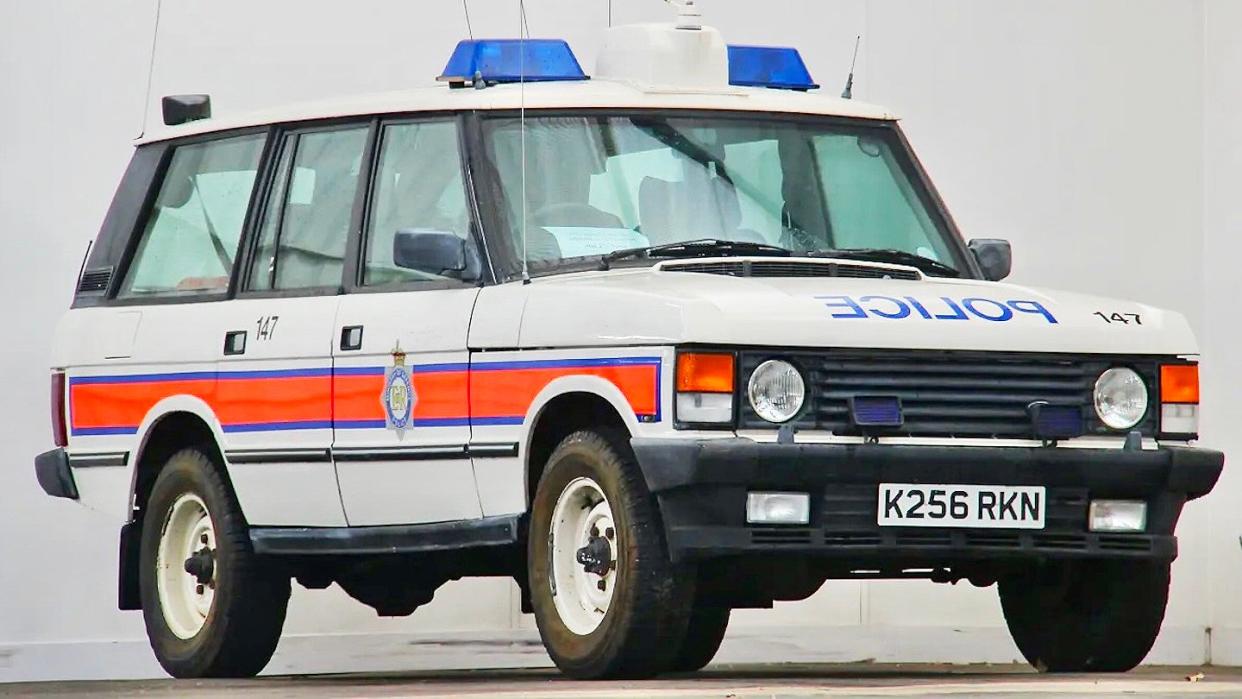
Two exceedingly rare ex-U.K. police armored Range Rovers — which, in a previous life, served together as escort vehicles for heavy-duty transports carrying components of nuclear weapons — were recently sold at auction.
The Range Rovers in question are stretched 1992 Vogue Efi As, with the registration numbers K256RKN and K327YVP, and were auctioned by Brightwells Ltd. on October 25. K256RKN was sold for £33,600 ($40,882 at the current exchange rate), while K327YVP was sold for £18,592 ($22,621). According to the auction house, both vehicles have been kept in storage since the early 2000s, since they were replaced with newer variants in 2001, and are in extremely good condition.
As Brightwells notes, the SUVs are "ideal for shows, museums or perhaps to keep you safe when the world blows up..."
https://www.youtube.com/watch?v=JAOTT8Qw5EM
At first glance, the SUVs look similar to other Vouge Efi Range Rovers used by the U.K. police during the 1990s. K256RKN, for example, sports the now-outdated 'jam sandwich' livery, featuring a fluorescent orange stripe running down its side.
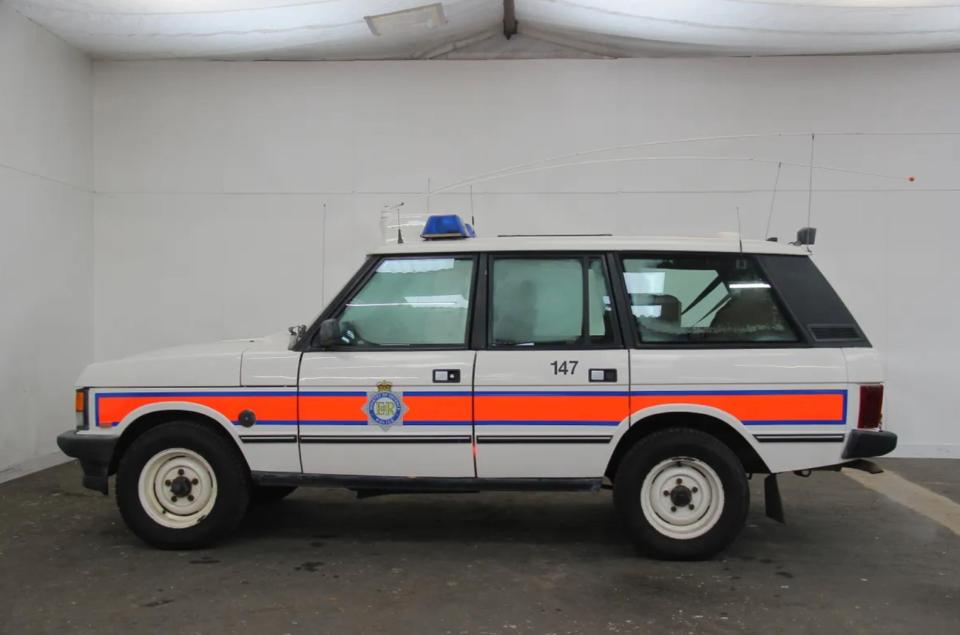
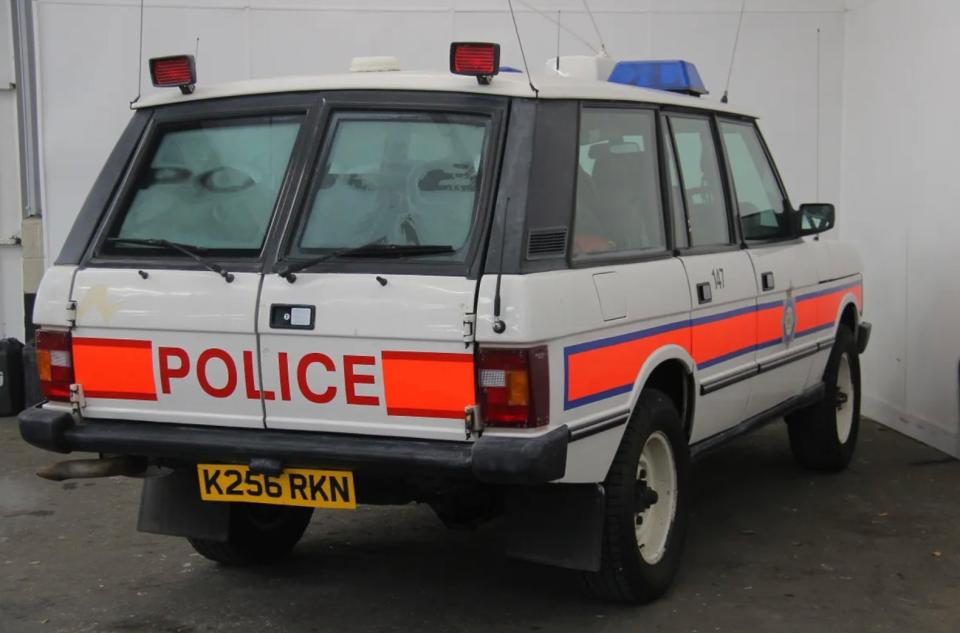
K327YVP, on the other hand, can be seen with a 'Battenburg' livery — first introduced in the 1990s and which continues to be used on U.K. police vehicles today.
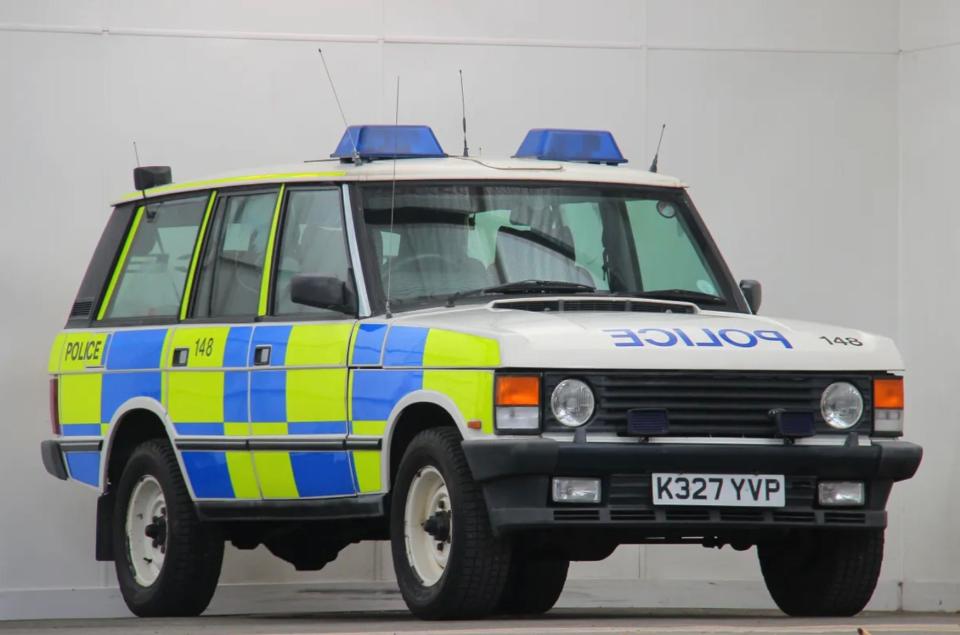
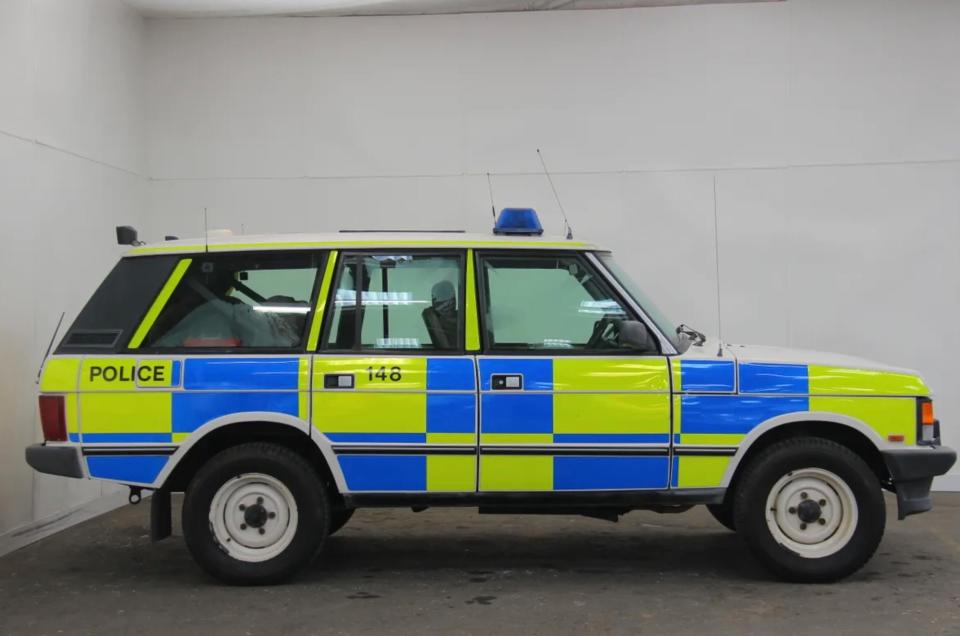
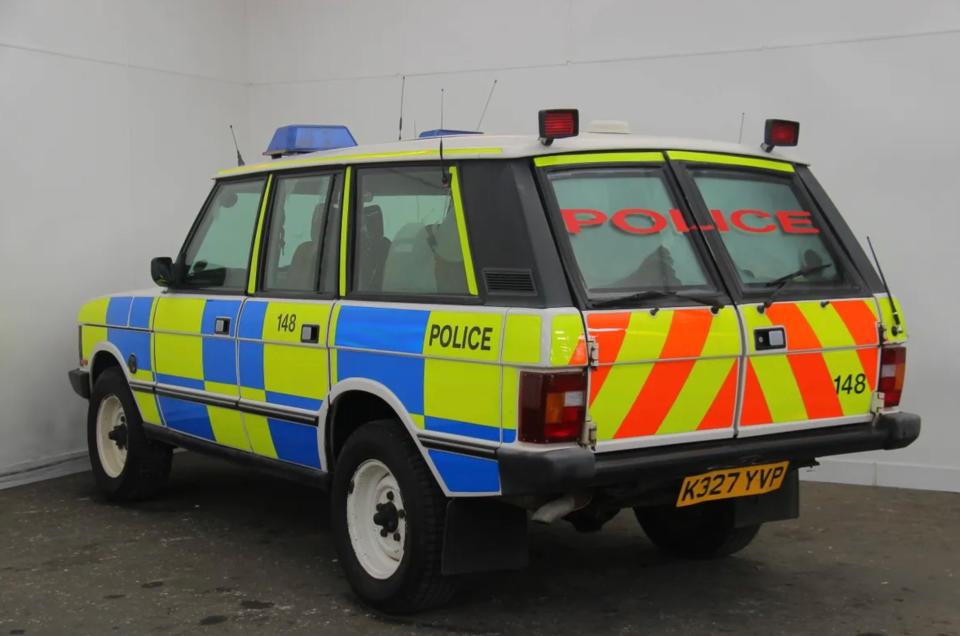
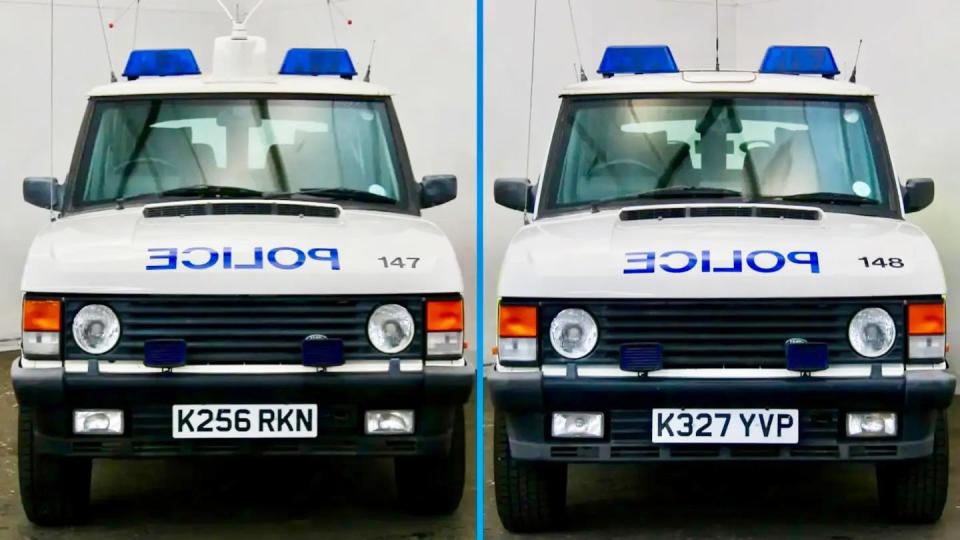
Both vehicles feature their original WASP (Wireless Antenna Sensor Pod) roof modules, radio aerials, twin roof lights, front fog lights, high-intensity rear red lights, and hidden grill lights. "But remember," as the listing for K256RKN notes, "these need to be covered if the vehicle is being used on the public road otherwise you run the risk of being arrested for impersonating a police officer!"
K256RKN and K327YVP also boast a number of modifications to their interiors, including an array of toggle switches, compartments, and remnants of their radio systems. The Range Rovers would have boasted high-frequency radio systems during the early 1990s, Brightwells indicates, although these have since been removed. In between the rear passenger seats, both Range Rovers sport an additional central console speedo.
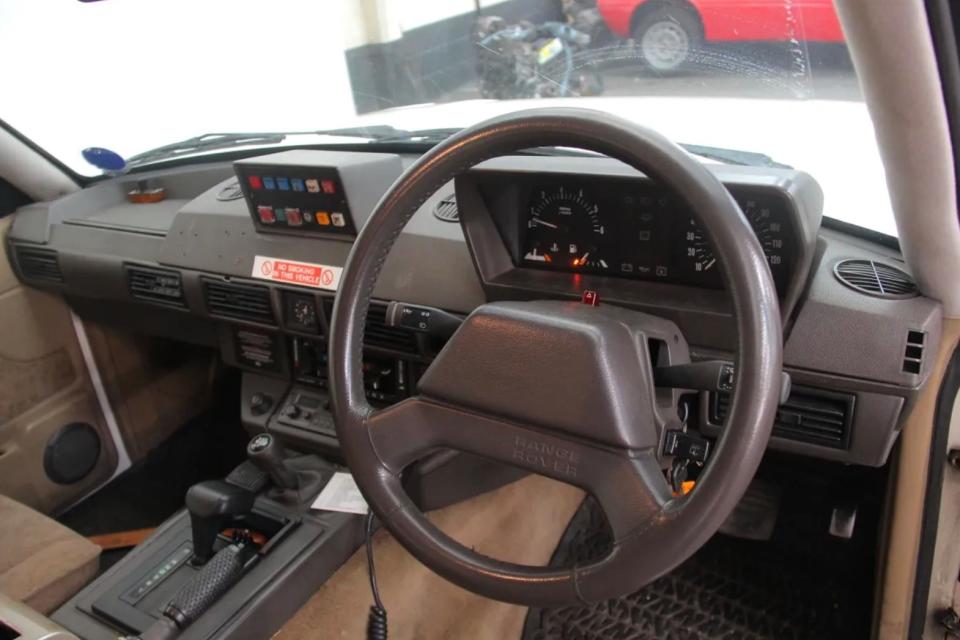
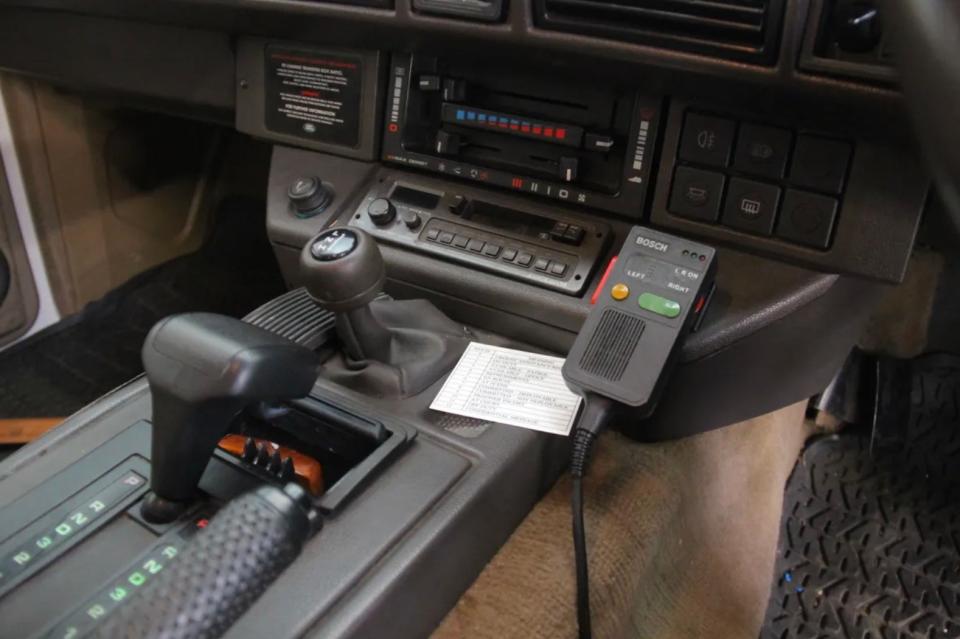
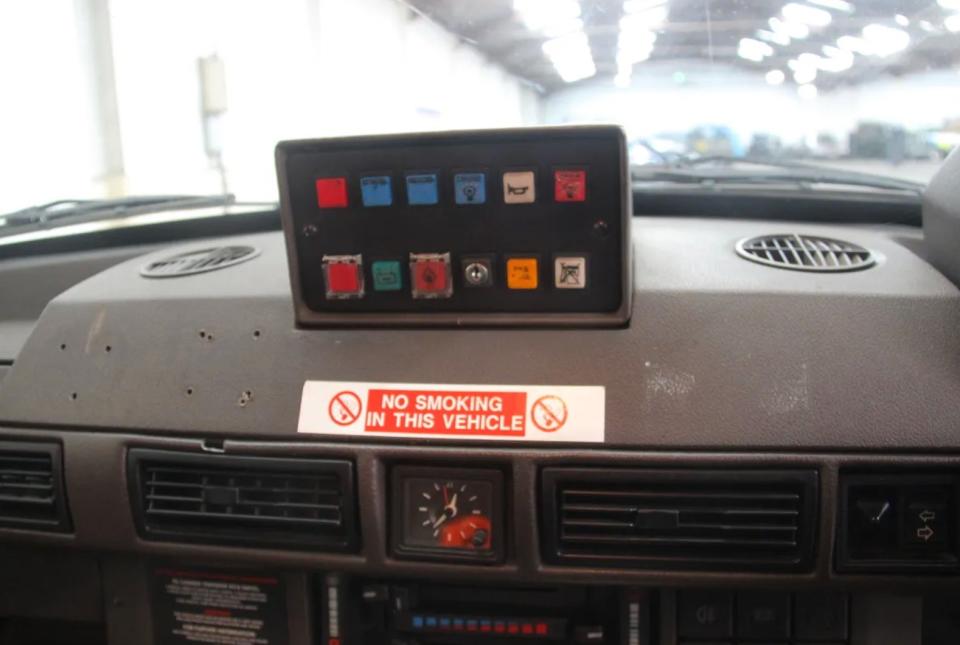
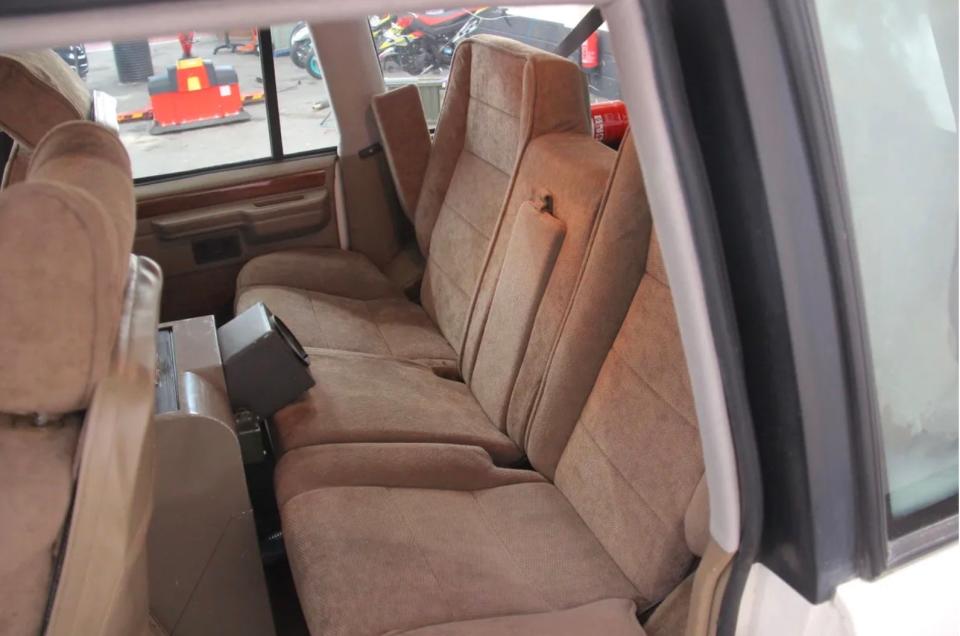
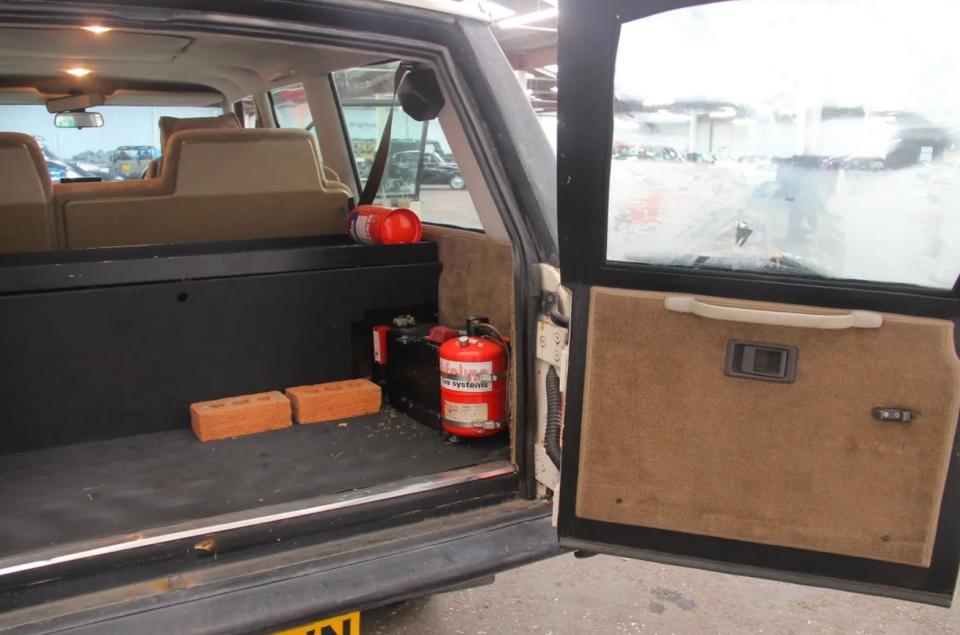
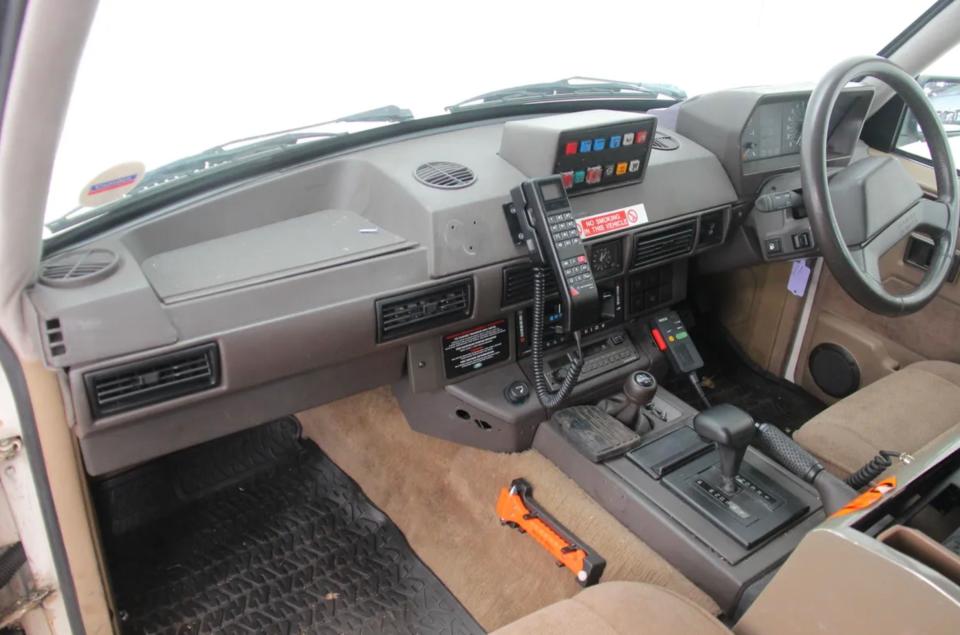

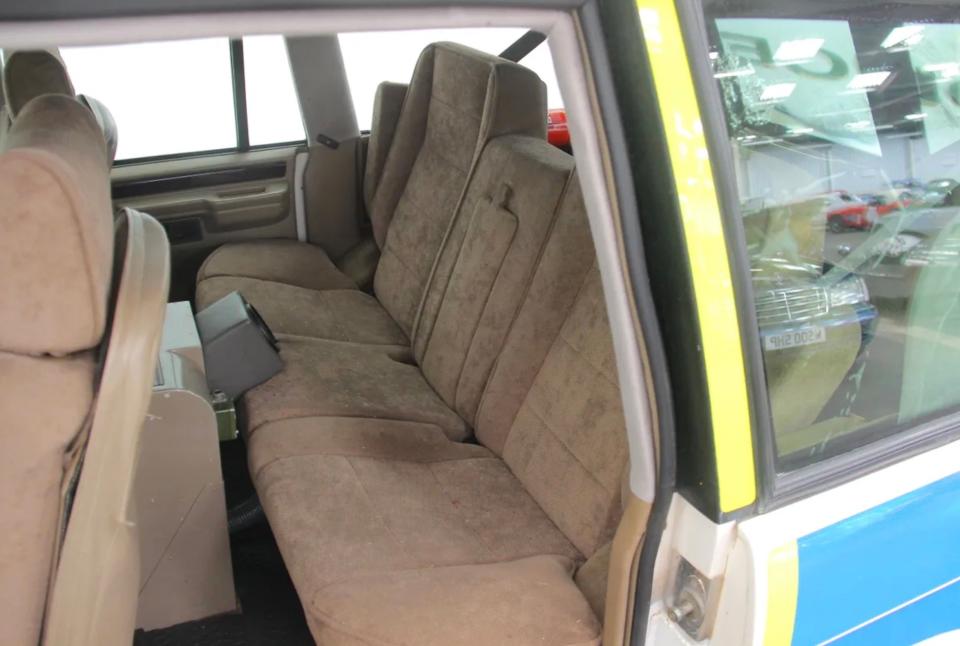
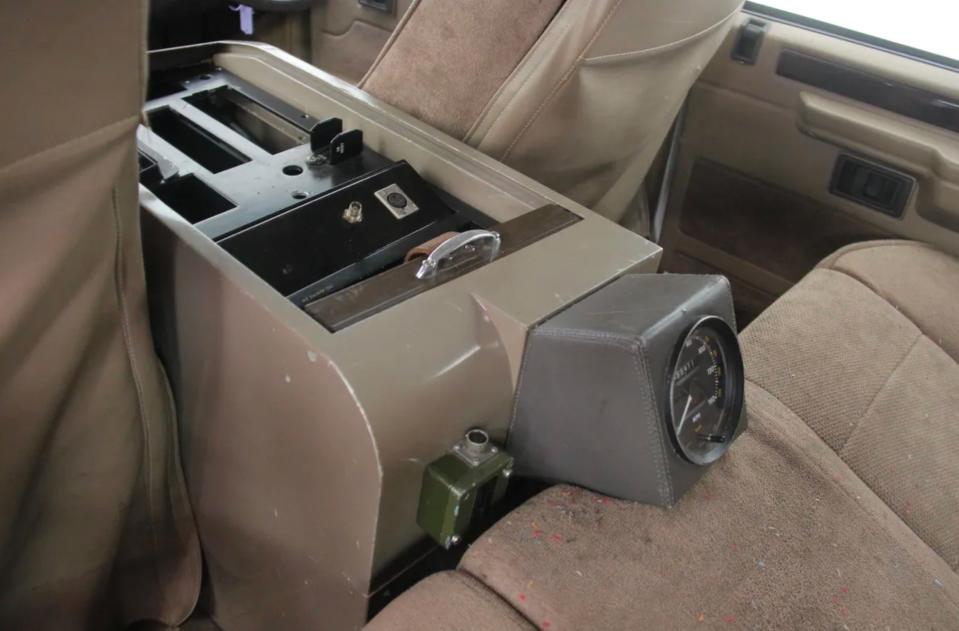
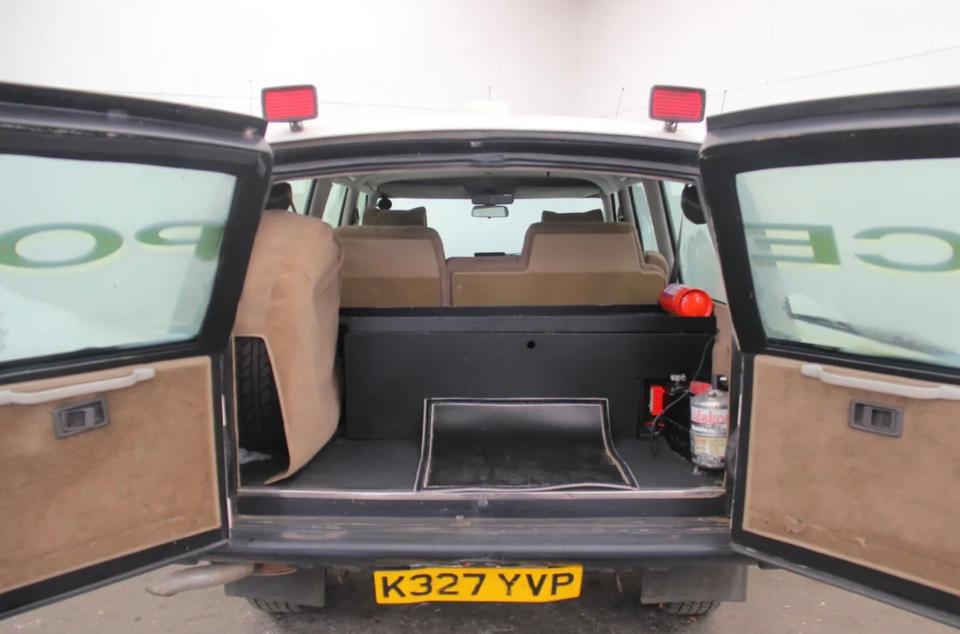
So far, so normal for U.K. police SUVs of the period. However, the Range Rovers also received other upgrades during their operational lives less noticeable to the naked eye.
Built on a 110 chassis, they were at some stage fitted with armor plating from S. MacNeillie & Son Limited, based out of Walsall in the West Midlands. As Brightwells’s auction listing highlights, all the doors on both examples — including their twin rear doors alongside the passenger doors — were fitted with armor plating. Moreover, heavily laminated bullet-proof windows were also installed to protect personnel inside. Further alterations were made by MacNeillie, too, including the addition of escape hatches to the SUV's roofs and the inclusion of concealed rifle compartments for easy firearm access beneath the front seats.
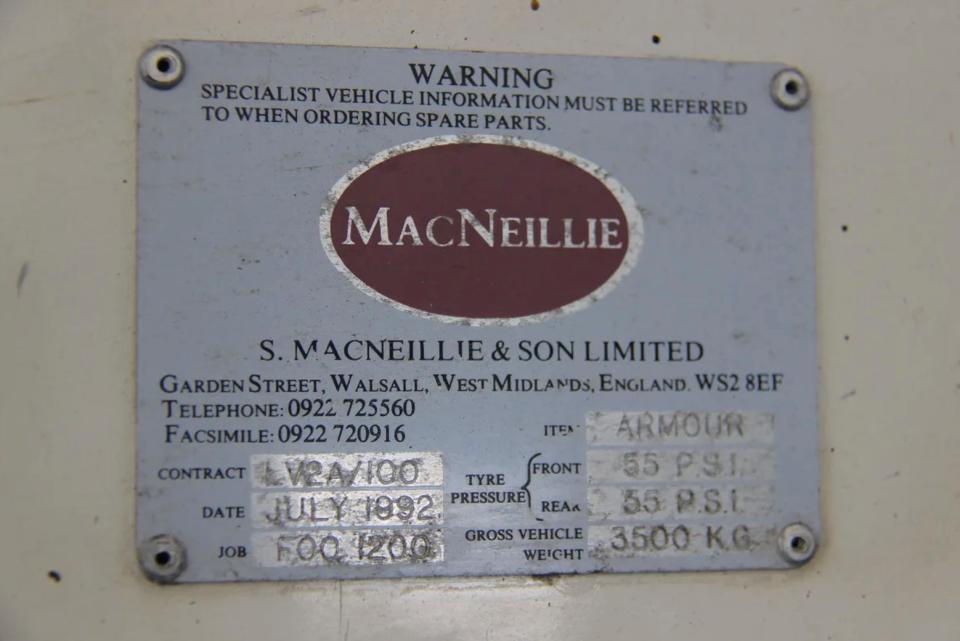
The reason why these particular models were given these upgrades was because of the specialized mission they were used to execute. The Range Rovers were used as part of the U.K. Ministry of Defense’s Special Escort Group (SEG), a police unit that still relies on specially adapted vehicles to escort nuclear weapon components and other sensitive materials around the U.K.
The Ministry’s SEG has roots dating back to the late 1970s, during which time it played a major role in safeguarding the transportation of special nuclear materials — including tritium, enriched uranium, and depleted uranium. In the early 1990s, as Mick Nottage, convoy commander and temporary inspector, told the Ministry of Defense’s Talk Through Magazine in 2004, the SEG’s remit began to expand. This included safeguarding all road-based transportation for nuclear material within the U.K. A key element of this involved providing security, and performing traffic control, for nuclear weapons convoys, which was previously performed by Royal Air Force (RAF) motorcyclists. The SEG took over this role completely in 2002.
"It was because of the excellent track record of this service provided by this specialist section of Ministry of Defence Police, over a period of nearly 22 years, that the Ministry of Defence decided to bring the escorting of all Defence Nuclear Material, Nuclear Weapons and Special Nuclear Material under one roof [in the early 1990s]."
The most high-profile role the two Range Rovers played as part of the SEG was coordinating the movement of nuclear warheads for Trident submarine-launched ballistic missiles (SLBMs). In the 1980s, Prime Minister Margret Thatcher procured Trident II D5 missiles from the Reagan administration to deploy on a small fleet of cutting-edge ballistic missile submarines (SSBN), which later became known as the Vanguard class. They were envisaged at the time as the second-strike deterrent needed by the U.K. to deter the Soviet Union, replacing the Polaris program. However, it was not until December 1994 that the first Vanguard SSBN patrol took place, well after the end of the Cold War. Trident went on to completely replace Polaris in 1996.
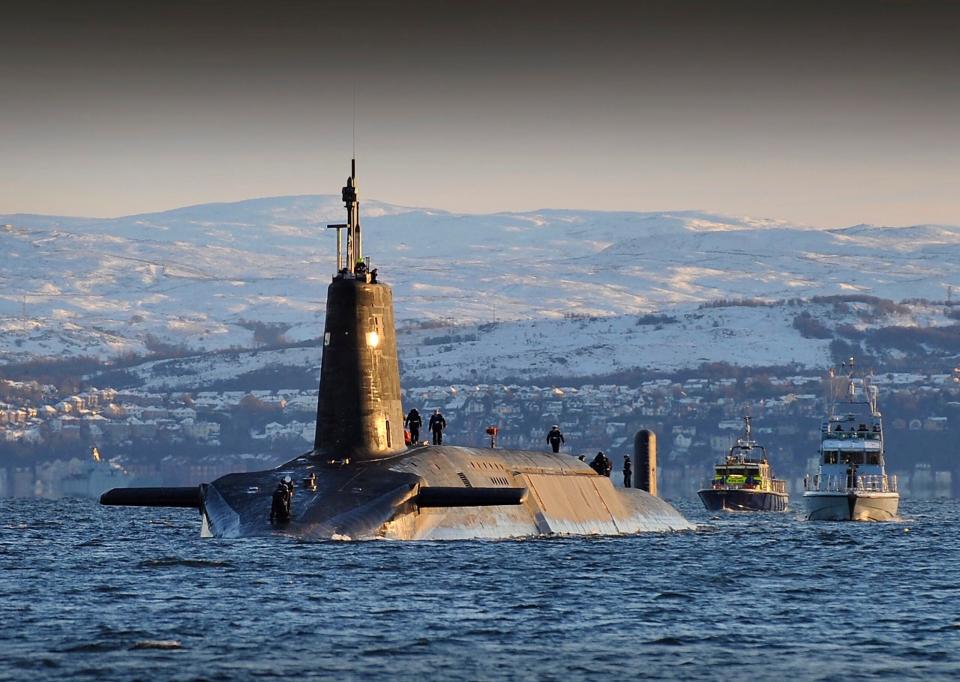
Although the U.K.’s Trident missiles were, and still are, sourced from the U.S., their warheads — sometimes referred to as 'Holbrook' and believed to be close in design to the U.S.-made W76 — were developed domestically. Production on said warhead began in 1988 at the Ministry of Defense’s Atomic Weapons Establishment (AWE), which is headquartered in Aldermaston, Berkshire, southeast England. Precise details on 'Holbrook' remain a closely guarded secret.
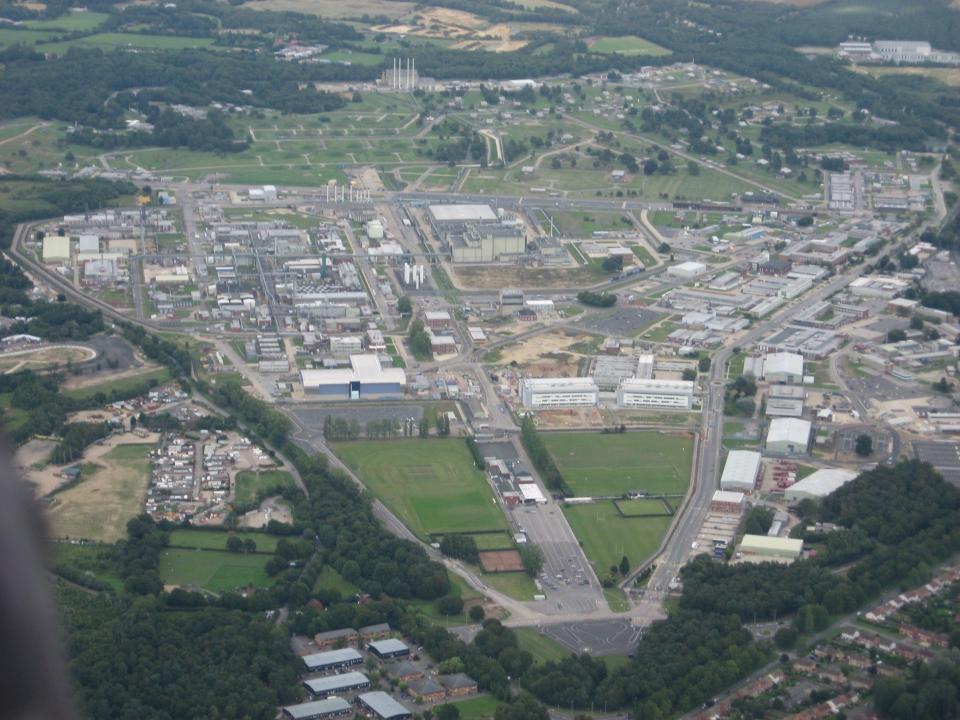
As part of a fleet of six, Brightwells notes, the Range Rovers primarily provided close escort to a number of heavy-duty trucks carrying Trident warheads between AWE Burghfield, which is located eight kilometers (4.8 miles) northeast of Aldermaston, and Royal Naval Armaments Depot (RNAD) Coulport on Scotland’s west coast. RNAD Coulport is part of HM Naval Base Clyde, which is also known as Faslane, from which one Vanguard submarine always remains on patrol at any given time to upkeep the U.K.’s second strike capability.
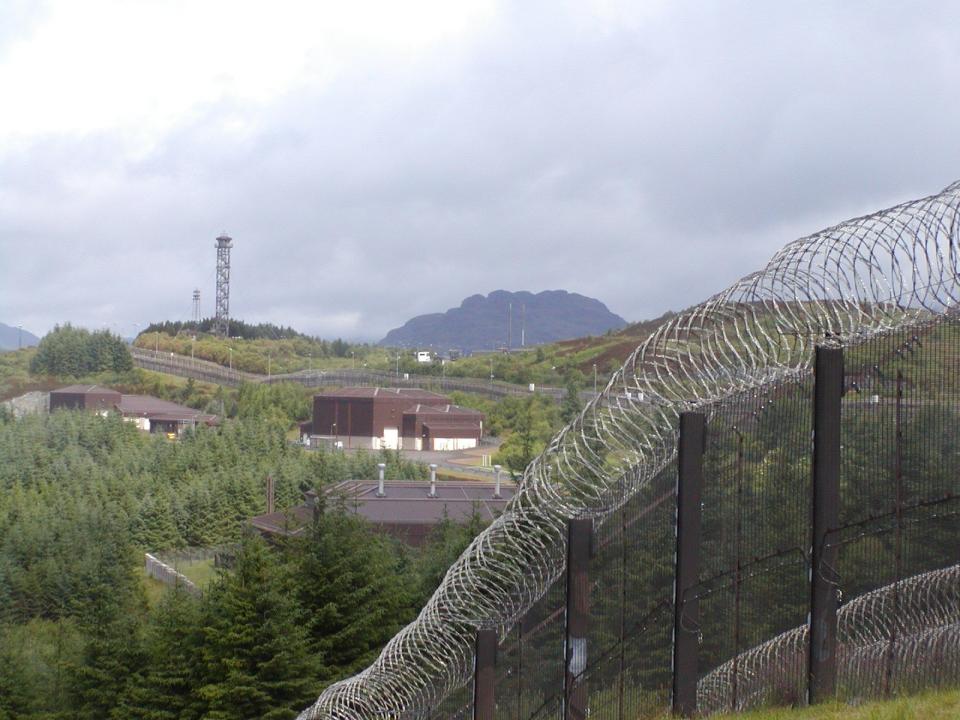
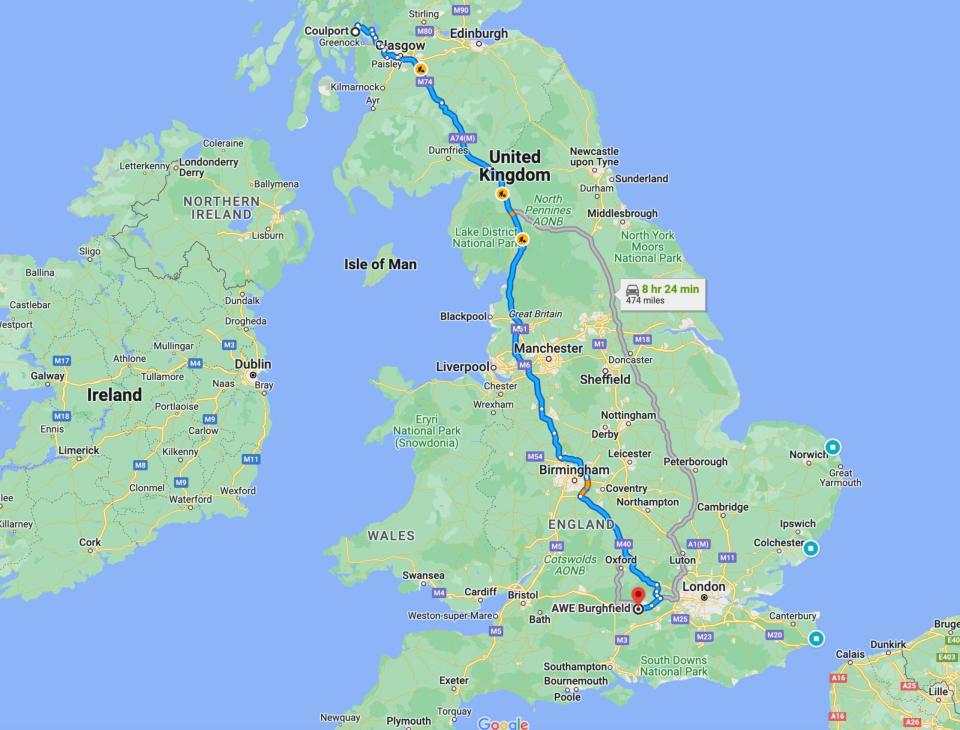
During the nearly 450-mile journey between the two destinations, as previously mentioned, the Range Rovers would also have provided traffic control for the entire convoy on the move — which included safety vehicles such as fire fighting trucks. While the precise composition of the nuclear weapons convoys in the 1990s remains murky, we know that more recent variations typically include up to 20 vehicles, led, as Nottage told Talk Through Magazine in 2004, by the escort commander. As the warheads require scheduled refurbishment, laden convoys deploy from both AWE Burghfield and RNAD Coulport several times a year, featuring a mixed civilian, police, and military presence:
https://www.youtube.com/watch?v=Jn1q6RGcoyY
"The Escort Commander vehicle leads the convoy. This is where I come into the picture. From here, I navigate the routes and manage the timings by constantly being kept informed of traffic situations up ahead and to make judgements on whether to carry on or change from the plan. Safety is the paramount consideration and the object is to go through junctions and roundabouts as safely as possible by using motorcyclists and a traffic car to police traffic control."
"Then we come to the TCHDs, or Truck Cargo Heavy Duty vehicles. We normally run with three but we are capable of having five on the road at one time. An AWE driver is accompanied by an SEG officer as Close Escort."
"Following is the Fire Tender, with staff employed by AWE — the Convoy Safety Officer & Fire Crew and then we have the Convoy Commander’s Vehicle, manned by Chief Inspector Richard Willcocks and his team."
"The Traffic Car with two SEG police officers keep traffic behind by putting on a 'rolling block' whenever there is a traffic build up ahead or the convoy approaches hazards such as roundabouts or junctions."
"Two miles behind the main part of the Convoy there is a Support Element that includes a Convoy Support vehicle and a Recovery vehicle. The AWE provides a Deputy Convoy Safety Officer who is responsible for this element."
"Finally, but still very important to the team, there is the Coach; no, not someone who gets us running and exercising at the crack of dawn. This is our transport to our night’s accommodation at our final destination."
A stand-off escort, comprising armed members of the Royal Marines, provides additional security to counter any potential threat to the convoy.
Maintaining heightened security, which SEG operatives regularly train for at AWE Aldermaston and other locations, is critical should the convoy face a potential security risk or incident while on the road. All convoys are monitored by the Ministry of Defense in case of a nuclear incident or if the vehicles were to be targeted by terrorist organizations — which government officials have cited as a real cause for concern previously. This is compounded by the fact that convoys are often tracked and monitored by open-source intelligence networks while on the move.
Both in the 1990s as well as in the present, nuclear convoys have faced continued challenges when on the road from protesters calling for the elimination of nuclear weapons. Video footage taken by protesting groups can be seen below.
https://www.youtube.com/watch?v=Srytx_01MW8
While the work of the SEG continues today, the vehicles it utilizes when escorting Trident warheads — the group will eventually transport W93 warheads for the modernized Trident missiles used aboard the Royal Navy’s future Dreadnought class boats, which will replace its Vanguard SSBNs — is quite different compared to that of the 1990s. Mercedes-Benz Varios, armored by MacNeillie, fulfill a similar role now to that of the Range Rovers in the 1990s, but provide far more interior space for personnel and equipment. An example of those vehicles can be seen here.
So there you have it, the incredible history of the SEG and its 1990s Range Rovers, once a staple of the U.K.’s nuclear weapons program, now sold off to the highest bidder.
Contact the author: oliver@thewarzone.com

